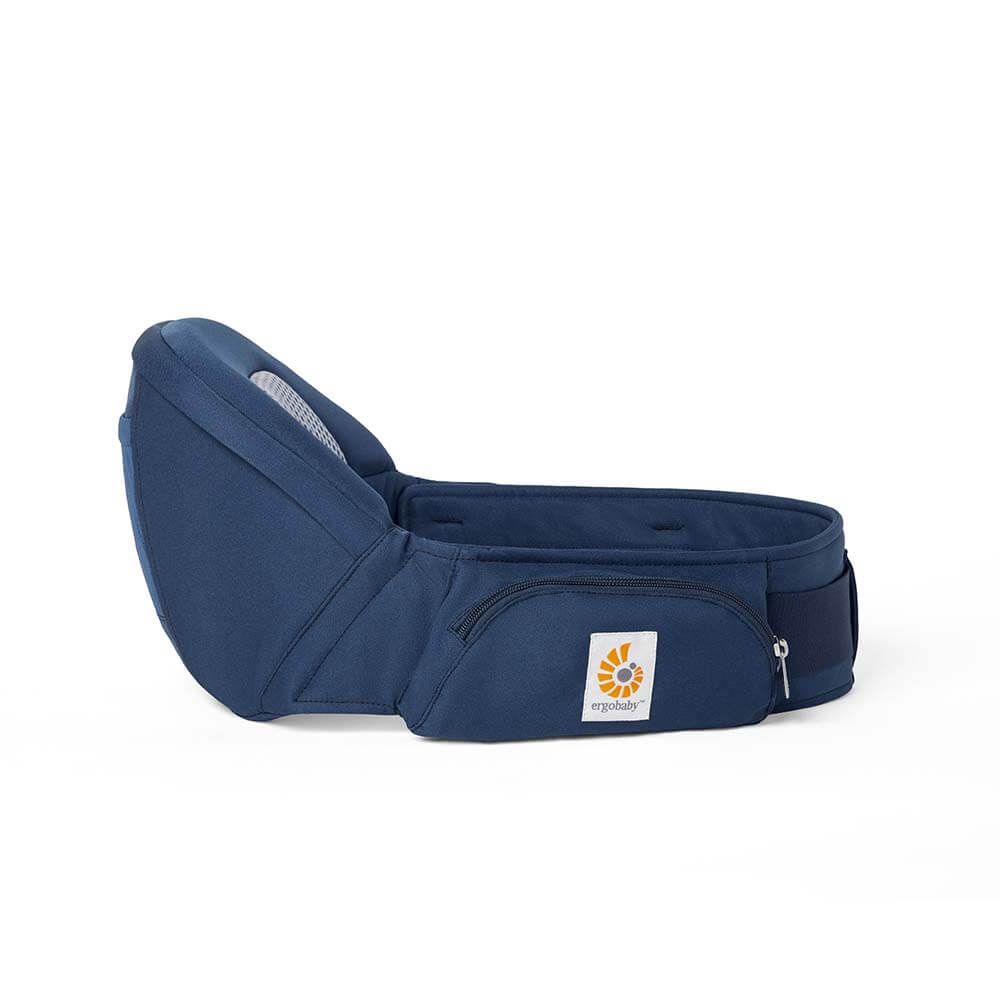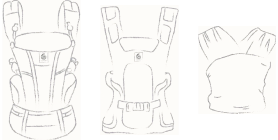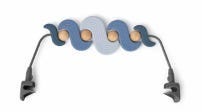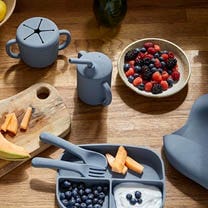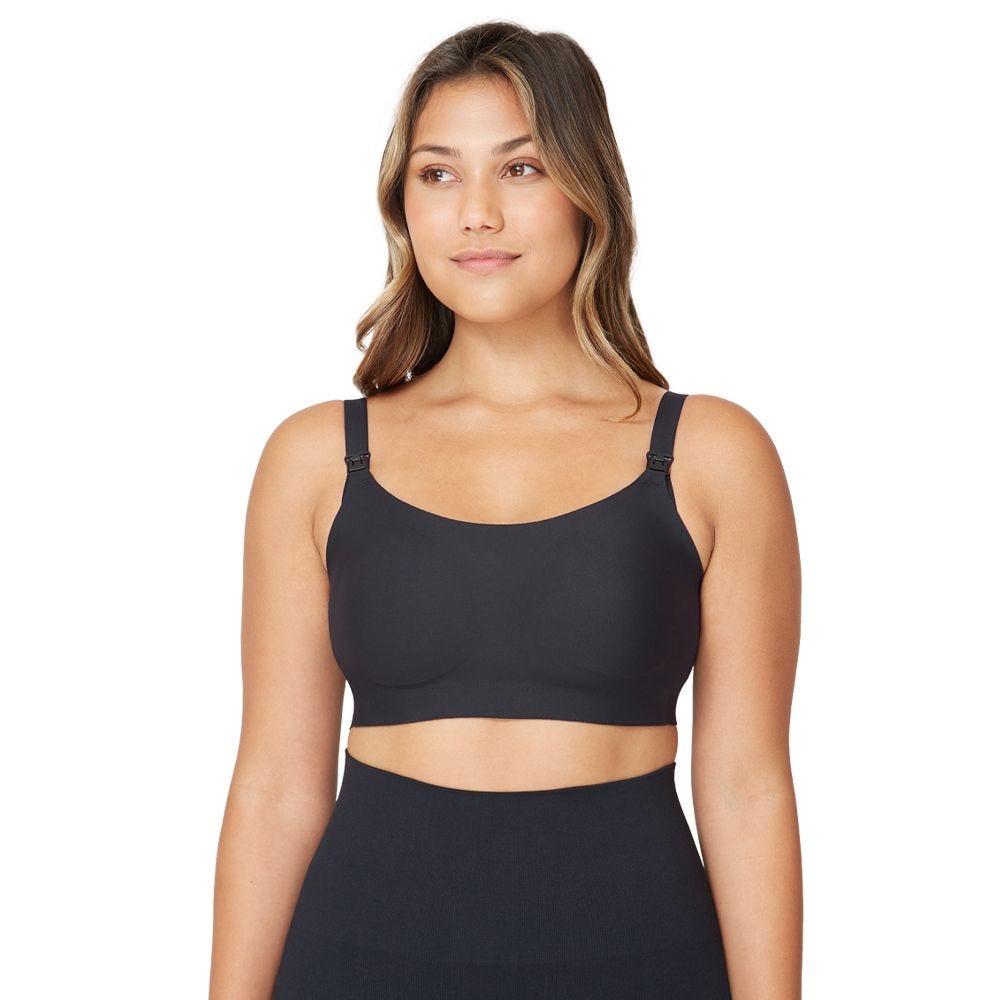Blog
April 18, 2025
We’re back again with our blog series sharing baby milestones by month. Today is the third installment featuring the 3-month-old baby development steps and milestones. So, what can a baby do after being in this world for a quarter of a year? Our pediatric expert Katrin shares more...
Ready for a little more action? Your baby definitely is. They’re moving beyond the stage of simply adjusting to the world and are starting to explore with curiosity. If they’ve been experiencing gas, that should improve by the end of the third month, as their digestive system continues to develop. Maybe your sleep-wake rhythm is finally settling in? If so, enjoy it—along with the fact that you’re becoming more confident in caring for your newborn.
3-month-old baby development – key milestones to look for:
Symmetrical elbow support during tummy time
Symmetry is the magic word in your 3-month-old’s development. That’s why symmetrical elbow support is a hallmark of this stage. Their palms lie open on the surface
April 18, 2025
Forward-facing babywearing used to be a controversial choice. We're going to shed some light on the topic and dispel some old myths. Concerns over comfort and safety date back to a time when there were no ergonomic baby carriers available, and the baby carriers used to allow baby‘s legs to dangle when carried.
With the invention of our Omni carriers, the ergonomic forward-facing carry really shows what it can do. It makes parents' and caregivers’ everyday lives so much easier, promotes joint activity with your child in all environments, and is very practical.
All of our baby carriers have been tested and certified by both the AGR (Aktion gesunder Rücken e.V.) campaign for healthier backs and the International Hip Dysplasia Institute, offering you total peace of mind when it comes to ergonomic positioning in all carry positions.
Forward-facing is no exception, and as with any carrying position, there are a few things to consider—so here is an overview of the most important facts about carrying
April 14, 2025
How to Wear Baby in Hip Position
Have you tried a hip carry? This is a great option for babies over 6 months who want to see more of the world, but still cuddle in to mom or dad for comfort when they need to. It's also a great alternative to an outward facing carry.
Even better? Purchase a Hip Seat or Ring Sling! These carriers make the hip carry effortless and comfortable for baby and caregiver! Emotional Benefits of Getting Outside
Spending time in nature with your baby can strengthen the bond between you. The simple act of holding your baby close, feeling their warmth, and sharing new experiences together can create strong emotional connections. It’s also a wonderful way to reduce stress and improve your mood. When my littles were extra fussy, I’d take a walk around the neighborhood. Even though I don't live in an area with trails and surrounded by nature, simply behind outside changed everything. A little vitamin D does wonders!
Cognitive Development
Nature is a sensory wonderland
April 14, 2025
How to Relieve Back Pain from Carrying a Baby
Carrying your baby is a beautiful way to bond, but it can also take a toll on your back if done incorrectly. Many parents experience back pain from carrying a baby when the carriers are used improperly. The constant lifting, holding, and feeding positions can lead to muscle strain and discomfort.
If you're wondering how to relieve back pain from carrying a baby, you’re in the right place! In this guide, we’ll share practical solutions for pain relief, tips for preventing back strain, and when to seek medical advice. Tips for How to Relieve Back Pain from Carrying a Baby
If you’re experiencing mid back pain from carrying a baby, or pain in your lower or upper back, here are effective ways to find relief:
1. Adjust Your Babywearing Posture
Wearing your baby incorrectly can strain your spine. When using a baby carrier, ensure: ✔️ Your baby is high enough to kiss the top of their head ✔️ Their legs are in an "M" position, with knees
April 07, 2025
Is your newborn baby crying when you lay them down? Don’t worry it’s totally normal!
It's no secret that babies need a lot of closeness and affection. Especially in the early months, when they have just arrived in the world. New parents know this all too well. So is your newborn baby crying when you lay them down? Whether it’s going to the bathroom, a quick shower, preparing a bottle or dinner - as soon as you put the little one down in the playmat or baby bouncer, they get upset. But why is that? And what can you do? Midwife and expert, Katrin Ritter, is here to help. Baby cries when put down - why is that?
At Ergobaby, we always emphasize how important it is for your baby to be close to you. After all, newborns are used to the close confinement, warmth and sound of your heartbeat from the womb. Close physical contact is also extremely important so that the baby can build a secure bond with its caregivers. This is a basic need for your newborn baby. So, it's no wonder that your
April 07, 2025
Ergobaby Baby Carriers for Plus Size Parents: How to Find the Right Carrier
Babywearing for Every Body
One of the greatest things about babywearing is that it’s for every baby and every body. Finding the best baby carrier for plus size parents is all about fit, adjustability, and comfort—regardless of body shape or size.
At Ergobaby, we understand that every body is unique, which is why we’ve designed our carriers to be inclusive, adjustable, and ergonomic. Whether you’re looking for a plus size baby carrier for everyday errands, hiking, or snuggling your newborn at home, we’ve got you covered. What to Look for in a Plus Size Baby Carrier
When choosing the best baby carriers for plus size moms or any plus size parent, here are a few key factors to consider:
1. Waistband Size & Adjustability
A longer waistband ensures a comfortable and secure fit. Since 2012, Ergobaby has increased the webbing length on all baby carriers to 55 inches, making our carriers more size-inclusive than
April 01, 2025
Baby Wrap vs Carrier: Find the Right Babywearing Option for You
Choosing between a baby wrap vs carrier can be a big decision for parents who want to keep their little one close while staying hands-free. There are so many reasons to wear your baby, but choosing the right carrier can be overwhelming. Each option offers unique benefits, and the right choice depends on your lifestyle, baby's age, and personal comfort preferences.
In this guide, we'll compare baby wraps vs carriers, explore their pros and cons, and help you decide which one (or both) best suits your needs. What are the different types of baby carriers?
Baby carriers come in different styles, each designed to offer a secure and comfortable way to carry your baby. While baby wraps fall into their own category, structured baby carriers are more versatile and user-friendly.
Here are the main types of baby carriers:
1. Soft-Structured Carriers (SSCs)
These are the most popular and ergonomic carriers, featuring padded
March 17, 2025
Things I Wish I Knew When I Learned My Baby Had Down Syndrome
This post was guest written by Rachael Lampa.
“99% risk of having Down Syndrome”. That was what the report said. I’m pretty sure there were also exclamation marks at the top and I’m pretty sure they were also in red. And the word, RISK?! Yikes. I wish they would use words more like: 99% OPPORTUNITY for having Down Syndrome! No wonder the first feelings are worry and fear!
Sure, this is not what you expected. This birth and this future might not be what you had in mind. And please, moms and dads, take the time to feel that- all of it. The grief, the pain, the panic, the questions. But can I just say, as I am 2 years in, the good comes! And it comes fast! And sometimes it's coupled with struggle, but the good is bigger!
Words matter. Tone matters. The voices of the Down Syndrome Community matter and that is why I want to start by thanking Ergobaby for asking the question- what are the “Things I Wish I Knew When I Learned
March 04, 2025
When Do Babies Start Crawling: A Developmental Guide on Baby Crawling
Baby crawling is one of the most exciting milestones in your little one’s development. As babies grow stronger and more curious about the world around them, crawling becomes their first major step toward independence. But when do babies start crawling, and how can you help them along the way? This comprehensive guide covers what to expect at different stages, the various styles of crawling, tips to encourage crawling, and when it might be time to talk to your pediatrician. When do babies start crawling?
So, what age do babies start crawling? On average, most babies begin to crawl between 6 to 10 months, but it’s important to remember that every baby develops at their own pace. Some babies might start as early as 5 months, while others may take closer to a year. Before crawling, you’ll notice early signs like:
Tummy time success: Babies who practice tummy time and can lift their head and chest are building
March 04, 2025
When Do Babies Sleep Through the Night?: A Baby Sleep Guide
Every new parent eagerly awaits the day their baby finally sleeps through the night. However, understanding when that day might come—and how to help it along—can feel like a mystery. Baby sleep patterns evolve as they grow, and what works at one stage may not work at another. In this guide, we’ll explore when babies sleep through the night, provide actionable tips for how to get a baby to sleep through the night, and discuss common reasons why your little one may have trouble achieving uninterrupted sleep. When do babies sleep through the night?
The big question most parents ask is: When should babies sleep through the night? The answer varies because every baby is unique, but here’s a general timeline based on age:
Newborn Stage (0-2 months)
In the newborn phase, babies typically sleep between 14-17 hours a day. However, they only sleep in short stretches of 2-4 hours at a time, waking frequently to feed. At this





